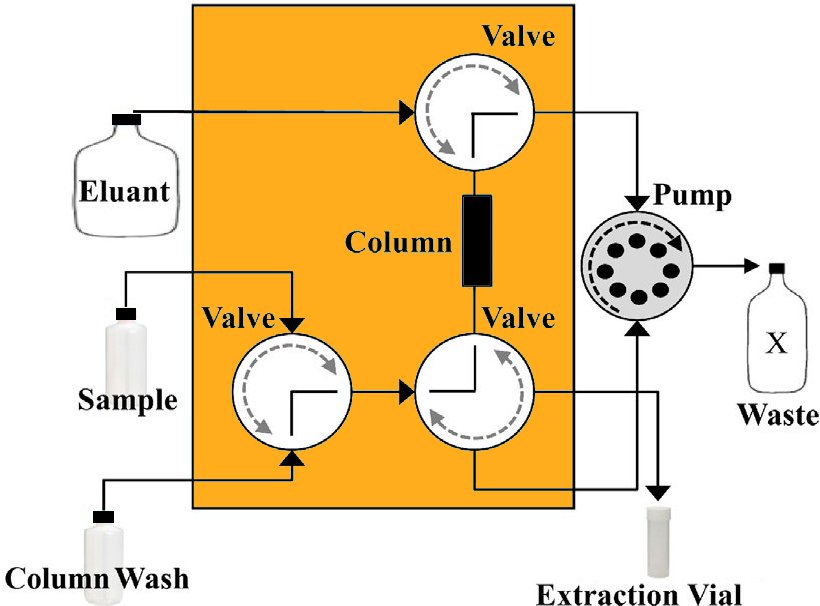Analyzing rapidly, precisely and semi-automatically lead isotopes on variable volumes of seawater (up to 1000 ml)
Zurbrick and co-authors present a relatively fast (2.5–6.5 hours), semi-automated system to extract lead (Pb) from seawater, with few chemicals yielding low blanks. They also demonstrate that subsequent Pb isotopic analyses are more precise using a multi-collector inductively coupled plasma mass spectrometry (MC-ICPMS) than high resolution ICP-MS (HR ICP-MS).
With the preceding work of Conway and co-workers (Conway et al., 2013) demonstrating similar analytical performances for iron (Fe), zinc (Zn) and cadmium (Cd), the ability of GEOTRACES community to determine key isotopes in seawater is clearly improving.

Figure: A diagram representing the offline Pb extraction apparatus; sample Pb is loaded on a column, which is subsequently flushed with column wash to reduce salts followed by elution of Pb for analysis. Click here to view the figure larger.
References:
Zurbrick, C. M., Gallon, C., & Flegal, A. R. (2013). A new method for stable lead isotope extraction from seawater. Analytica Chimica Acta, 800, 29–35. DOI: 10.1016/j.aca.2013.09.002. Click here to access the paper.
Conway, T. M., Rosenberg, A. D., Adkins, J. F., & John, S. G. (2013). A new method for precise determination of iron, zinc and cadmium stable isotope ratios in seawater by double-spike mass spectrometry. Analytica Chimica Acta, 793, 44–52. DOI: 10.1016/j.aca.2013.07.025. Click here to access the paper.
